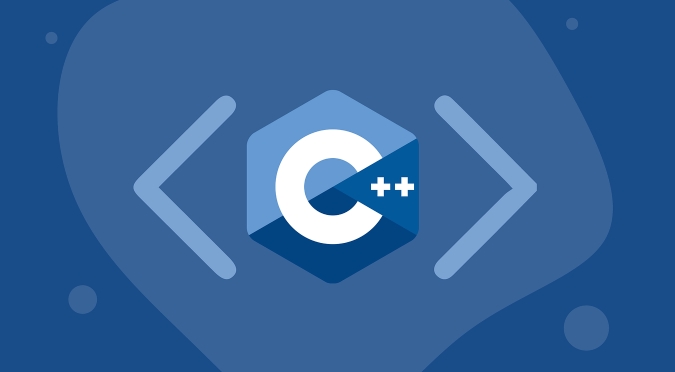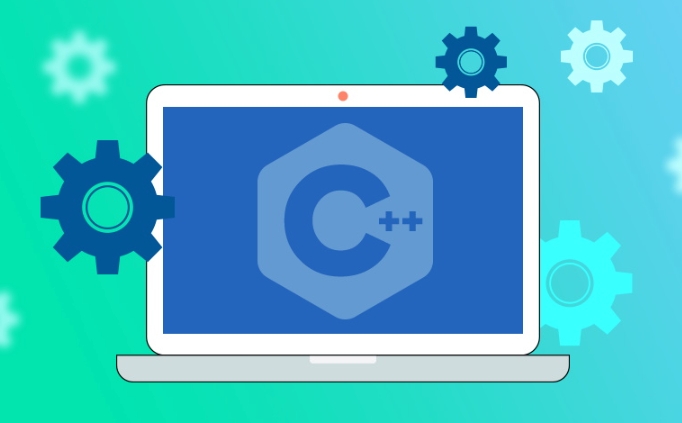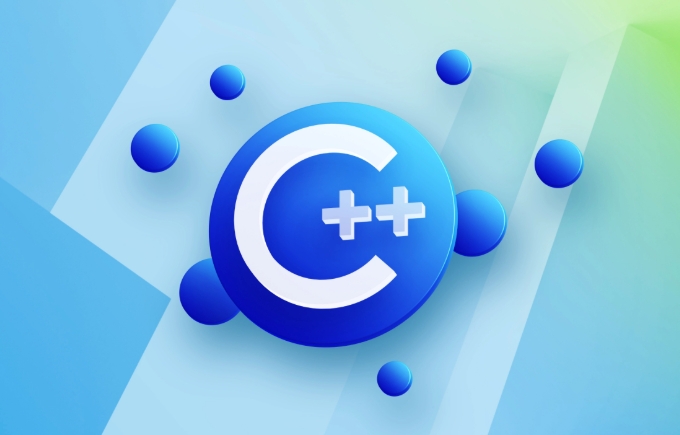Pointers are a key tool for efficient memory operation in C. 1. A pointer is a variable that stores memory addresses, and accesses the target value by dereference (); 2. Common operations include address fetching (&), dereference () and pointer operation (such as p); 3. When using dynamic memory, you need to cooperate with new and delete/delete[] to avoid memory leakage, repeated release and wild pointers; 4. Pointers can be used as function parameters to realize external variable modification and array transfer; it is recommended to practice more to understand its essence, and combine smart pointers to improve security.

Pointers are a basic but critical concept in C. Mastering it well is very helpful for writing efficient and flexible code. Many people will feel that the pointer is a bit wiggled at first, but in fact, as long as you understand the essence, it is not difficult to use.

What is a pointer?
Simply put, a pointer is a variable that stores the memory address . We usually use pointers to indirectly access or modify the value of a variable. for example:

int a = 10; int* ptr = &a;
Here ptr is a pointer to type int , which holds the address of variable a . The value of a can be accessed through *ptr .
A common misunderstanding is to understand pointers and ordinary variables together. In fact, there is a "indirect layer" between them, so pay special attention to this.

Basic operation of pointers
When using pointers, there are three most commonly used operations: address fetching, dereference, and pointer arithmetic.
- Get the address (&) : Get the memory address of the variable.
- * Dereference ( )**: Access the content pointed to by the pointer.
- Pointer operation : For example, adding one to the pointer will jump to the next corresponding data position.
For example:
int arr[] = {1, 2, 3};
int* p = arr; // Point to the first element of the array cout << *p; // Output 1
p ;
cout << *p; // Output 2This is very useful when iterating through arrays or processing strings.
What should be noted is:
- Do not dereference uninitialized pointers
- Avoid accessing freed memory
- Remember
deleteafter using dynamic allocated memory
The relationship between dynamic memory and pointer
C allows us to manually apply memory at runtime, which requires the use of pointers to match new and delete :
int* num = new int(5); // Dynamically allocate an int delete num; // Remember to release int* arr = new int[10]; // Assign an array delete[] arr; // Note that you should use delete[]
This part of the error-prone areas includes:
- Forgot to free memory causes memory leak
- Release the same piece of memory multiple times
- Continue to use pointers (wild pointers) after release
It is recommended to use smart pointers (such as std::unique_ptr or std::shared_ptr ) to automatically manage memory and reduce the chance of errors.
Pointer and function parameters
Sometimes we hope that the function can modify the variable passed in, and at this time we can use a pointer as a parameter to pass the address:
void increment(int* val) {
(*val) ;
}
int a = 5;
increment(&a);This method saves more resources than passing values ??and allows functions to affect external data.
In addition, pointers can also be used to pass arrays to functions:
void printArray(int* arr, int size) {
for (int i = 0; i < size; i)
cout << arr[i] << " ";
}The advantage of writing this way is that the function does not need to know the specific size of the array, it only needs to know the pointer and length.
Basically that's it. The pointer looks complicated, but in fact the core is address and indirect access. You can get started by practicing it a few more times.
The above is the detailed content of How to use pointers in C ?. For more information, please follow other related articles on the PHP Chinese website!

Hot AI Tools

Undress AI Tool
Undress images for free

Undresser.AI Undress
AI-powered app for creating realistic nude photos

AI Clothes Remover
Online AI tool for removing clothes from photos.

Clothoff.io
AI clothes remover

Video Face Swap
Swap faces in any video effortlessly with our completely free AI face swap tool!

Hot Article

Hot Tools

Notepad++7.3.1
Easy-to-use and free code editor

SublimeText3 Chinese version
Chinese version, very easy to use

Zend Studio 13.0.1
Powerful PHP integrated development environment

Dreamweaver CS6
Visual web development tools

SublimeText3 Mac version
God-level code editing software (SublimeText3)
 Using std::chrono in C
Jul 15, 2025 am 01:30 AM
Using std::chrono in C
Jul 15, 2025 am 01:30 AM
std::chrono is used in C to process time, including obtaining the current time, measuring execution time, operation time point and duration, and formatting analysis time. 1. Use std::chrono::system_clock::now() to obtain the current time, which can be converted into a readable string, but the system clock may not be monotonous; 2. Use std::chrono::steady_clock to measure the execution time to ensure monotony, and convert it into milliseconds, seconds and other units through duration_cast; 3. Time point (time_point) and duration (duration) can be interoperable, but attention should be paid to unit compatibility and clock epoch (epoch)
 How to get a stack trace in C ?
Jul 07, 2025 am 01:41 AM
How to get a stack trace in C ?
Jul 07, 2025 am 01:41 AM
There are mainly the following methods to obtain stack traces in C: 1. Use backtrace and backtrace_symbols functions on Linux platform. By including obtaining the call stack and printing symbol information, the -rdynamic parameter needs to be added when compiling; 2. Use CaptureStackBackTrace function on Windows platform, and you need to link DbgHelp.lib and rely on PDB file to parse the function name; 3. Use third-party libraries such as GoogleBreakpad or Boost.Stacktrace to cross-platform and simplify stack capture operations; 4. In exception handling, combine the above methods to automatically output stack information in catch blocks
 What is a POD (Plain Old Data) type in C ?
Jul 12, 2025 am 02:15 AM
What is a POD (Plain Old Data) type in C ?
Jul 12, 2025 am 02:15 AM
In C, the POD (PlainOldData) type refers to a type with a simple structure and compatible with C language data processing. It needs to meet two conditions: it has ordinary copy semantics, which can be copied by memcpy; it has a standard layout and the memory structure is predictable. Specific requirements include: all non-static members are public, no user-defined constructors or destructors, no virtual functions or base classes, and all non-static members themselves are PODs. For example structPoint{intx;inty;} is POD. Its uses include binary I/O, C interoperability, performance optimization, etc. You can check whether the type is POD through std::is_pod, but it is recommended to use std::is_trivia after C 11.
 How to call Python from C ?
Jul 08, 2025 am 12:40 AM
How to call Python from C ?
Jul 08, 2025 am 12:40 AM
To call Python code in C, you must first initialize the interpreter, and then you can achieve interaction by executing strings, files, or calling specific functions. 1. Initialize the interpreter with Py_Initialize() and close it with Py_Finalize(); 2. Execute string code or PyRun_SimpleFile with PyRun_SimpleFile; 3. Import modules through PyImport_ImportModule, get the function through PyObject_GetAttrString, construct parameters of Py_BuildValue, call the function and process return
 How to pass a function as a parameter in C ?
Jul 12, 2025 am 01:34 AM
How to pass a function as a parameter in C ?
Jul 12, 2025 am 01:34 AM
In C, there are three main ways to pass functions as parameters: using function pointers, std::function and Lambda expressions, and template generics. 1. Function pointers are the most basic method, suitable for simple scenarios or C interface compatible, but poor readability; 2. Std::function combined with Lambda expressions is a recommended method in modern C, supporting a variety of callable objects and being type-safe; 3. Template generic methods are the most flexible, suitable for library code or general logic, but may increase the compilation time and code volume. Lambdas that capture the context must be passed through std::function or template and cannot be converted directly into function pointers.
 What is a null pointer in C ?
Jul 09, 2025 am 02:38 AM
What is a null pointer in C ?
Jul 09, 2025 am 02:38 AM
AnullpointerinC isaspecialvalueindicatingthatapointerdoesnotpointtoanyvalidmemorylocation,anditisusedtosafelymanageandcheckpointersbeforedereferencing.1.BeforeC 11,0orNULLwasused,butnownullptrispreferredforclarityandtypesafety.2.Usingnullpointershe
 How does std::move work in C ?
Jul 07, 2025 am 01:27 AM
How does std::move work in C ?
Jul 07, 2025 am 01:27 AM
std::move does not actually move anything, it just converts the object to an rvalue reference, telling the compiler that the object can be used for a move operation. For example, when string assignment, if the class supports moving semantics, the target object can take over the source object resource without copying. Should be used in scenarios where resources need to be transferred and performance-sensitive, such as returning local objects, inserting containers, or exchanging ownership. However, it should not be abused, because it will degenerate into a copy without a moving structure, and the original object status is not specified after the movement. Appropriate use when passing or returning an object can avoid unnecessary copies, but if the function returns a local variable, RVO optimization may already occur, adding std::move may affect the optimization. Prone to errors include misuse on objects that still need to be used, unnecessary movements, and non-movable types
 What is an abstract class in C ?
Jul 11, 2025 am 12:29 AM
What is an abstract class in C ?
Jul 11, 2025 am 12:29 AM
The key to an abstract class is that it contains at least one pure virtual function. When a pure virtual function is declared in the class (such as virtualvoiddoSomething()=0;), the class becomes an abstract class and cannot directly instantiate the object, but polymorphism can be realized through pointers or references; if the derived class does not implement all pure virtual functions, it will also remain an abstract class. Abstract classes are often used to define interfaces or shared behaviors, such as designing Shape classes in drawing applications and implementing the draw() method by derived classes such as Circle and Rectangle. Scenarios using abstract classes include: designing base classes that should not be instantiated directly, forcing multiple related classes to follow a unified interface, providing default behavior, and requiring subclasses to supplement details. In addition, C






